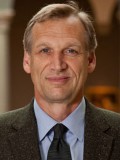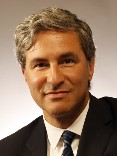Like the heads of major corporations such as Google or General Motors, being a museum director is an equally prestigious post and equally shrouded in secrecy. He or she may be a quasi-public figure who attends exhibition openings and dinners, hobnobs with art collectors and donors and signs appeal letters. But who are they as people, what do they think and what do they do in their office all day?
It’s pretty much a mystery. Once they ascend to museum heaven, directors live behind a velvet curtain. While they head a leading institution in their city, they rarely write articles or speak on artistic issues and are seldom seen at civic events outside museum circles.
We can therefore thank Michael Shapiro, for- mer director of the H

igh Museum of Art in Atlanta for 15 years, for pulling the curtain back a good deal with his book, “Eleven Museums, Eleven Directors” (High Museum of Art, 2016). “One thing I’m intrigued about,” he told a reporter, “is how people become art museum directors.” The book gives us enlightening profiles of eleven top museum directors whom Shapiro interviewed in 2015, touching upon their early exposure to art, their circuitous career paths, generous mentors and favorite works.

Shapiro, as a fellow director, was able to elicit revealing vignettes from each colleague. The eleven interviewees were Kaywin Feldman at the Minneapolis Institute of Art, Thelma Golden at the Studio Museum in Harlem, Michael Govan at the Los Angeles County Museum of Art, Glenn D. Lowry at the Museum of Modern Art, Ann Phil- bin at UCLA’s Hammer Museum, Timothy Rub at the Philadelphia Museum of Art, Gary Tinterow at the Museum of Fine Arts, Houston and Julian Zugazagoitia at the Nelson-Atkins Museum of Art in Kansas City. He also interviewed Maxwell Anderson, just before he left the Dallas Museum of Art and Matthew Teitelbaum at the Art Gallery of Ontario, Toronto before he assumed the leadership of the Museum of Fine Arts, Boston.
There are some significant omissions, perhaps due to scheduling problems or simply Shapiro’s wish to cap the number. Still, it would have been more complete to have heard from Thom- as Campbell at the Metropolitan Museum of Art, Douglas Druick (still the head of the Art Institute of Chicago in 2015) and perhaps Adam Weinberg at the Whitney Museum or Timothy Potts at the J.Paul Getty Museum.
What I found surprising to read was that many directors had no intention of entering museum work. It was, what Lowry and others call “utter serendip

ity.” That was the case with Anderson, Lowry, Rub, Teitelbaum and Zugazagoitia. But for a few, their boyhood passions—collecting a penny for every year of Queen Victoria’s reign for Anderson and making miniature museum displays for Tinterow—foretold their gravitational pull toward the museum world.
Some took an art history course as a college elective an

d got hooked by the art or a mesmerizing teacher, like Lane Faison at Williams College. For others, a museum internship was the spark. For Feldman, “Seeing Giotto changed my life.”
Once they began working in museums, their path toward greater leadership was helped by mentors with whom they worked and from whom they learned. Shapiro provides a fascinating list of mentors that the directors cited at the back of the book. It is a fitting homage to several generations of famed curators and directors who tilled the soil before and set high standards. Leaders such as Philippe de Montebello, Anne d’Harnoncourt, Martin Friedman, Douglas Cooper and Jean Sutherland Boggs.
As one reads the profiles, it may seem that each director’s ascension had an air of inevitability. That is not the case. In the rarified museum world, snatching the director’s ring is often a matter of luck. After one has compiled a steady record of strong exhibits and scholarship, accolades and promotions, making the director grade comes down to getting an all-important call from an executive recruiter. Over the last quarter-century, the most prestigious museum posts have been filled by three outside headhunters: Malcolm Mackay, Nancy Nichols and Sarah James.

While the book is an engaging read, I closed Shapiro’s study with a nagging feeling of frustra- tion. It had ended too soon. The book’s subtitle is “Conversations on Art & Leadership.” While the book captured each director’s past splendidly, it devoted precious little space to the leadership role these men and women face in the present— the main challenges they face along with their vision for the future.
Museums are no longer simply places where one passively looks at pictures. They are now about connecting with visitors, providing a more immersive experience and seeking a more interactive role with their community. Yet, as best I remember, Shapiro asked only four directors—Anderson, Feldman Golden and Zugazagoitia—the direct question: “What do you see as the future of museums?”
Responses were mainly brief and convention- al. Feldman and Golden had the most thoughtful responses. Feldman answered, “We need new kinds of jobs and positions in museums. We need some changed behavior.” She targeted a need for museums to understand their audience better and she plans to make two new hires: an audience insights person and someone who can better connect the museum’s content with its Minneapolis community.
Readers intent on glimpsing museums’ future can turn to a 2015 report from the Center for the Future of Museums that identifies six trends: open data sharing; a need for museums to revise their ethics statements on such emerging issues as unpaid internships, conflict-of-interest, provenance research and privacy of digital data; personalization; climate change; wearable technology and slowing down the museum expe- rience for a hurry-up world. A fuller explanation of each trend can be found in the report.
Also last year, MIT convened a distinguished panel on the future of the museum that included two museum directors (Thelma Golden and Jill Medvedow), two architects (David Adjaye and Charles Renfro) and the artist Lorna Simpson.
They discussed the relevance of physical space for shaping cultural experiences in the digital era, the potential of museums to engage diverse and participatory audiences and inviting contemporary artists to lead the way in re-conceiving how museums might interact with the public.
Why can’t the Association of Art Museum Directors convene some of the best and brightest directors featured in this book for their own public discussion of how museums can change—and shape–a more connected cultural environment? Or how about issuing a report of its own on the pressing themes explored at MIT? The AAMD has been notorious for speaking only to other directors and God.
Current museum leaders need to expand their public contacts, engage and enlighten the non- museum public on issues of cultural importance. As the public face of their institutions, they are the ones best entrusted with that responsibility. It’s crucial to reach beyond amassing reams of impersonal digital data, Trip Advisor accolades and visitor experience surveys to have face-to- face contact or thought pieces in local or national media.
Museum directors need to do more talking the talk and walking the walk. Museums are not private domains for the privileged few but are chartered as public trusts for the many. Those profiled in Shapiro’s book are among the field’s best and brightest and appear up to the task. The museum world’s past penchant for privacy among a chosen few now seems so 20th Century .
Tom Mullaney
He has written about museums since 1980 and has interviewed many museum heads over three decades, including Philippe de Montebello, J. Carter Brown, Sherman Lee, James Wood, Earl A. “Rusty” Powell, Maxwell Anderson, Kaywin Feldman and James Cuno.
Volume 31 number 3, January / February 2017 pp 14-15
